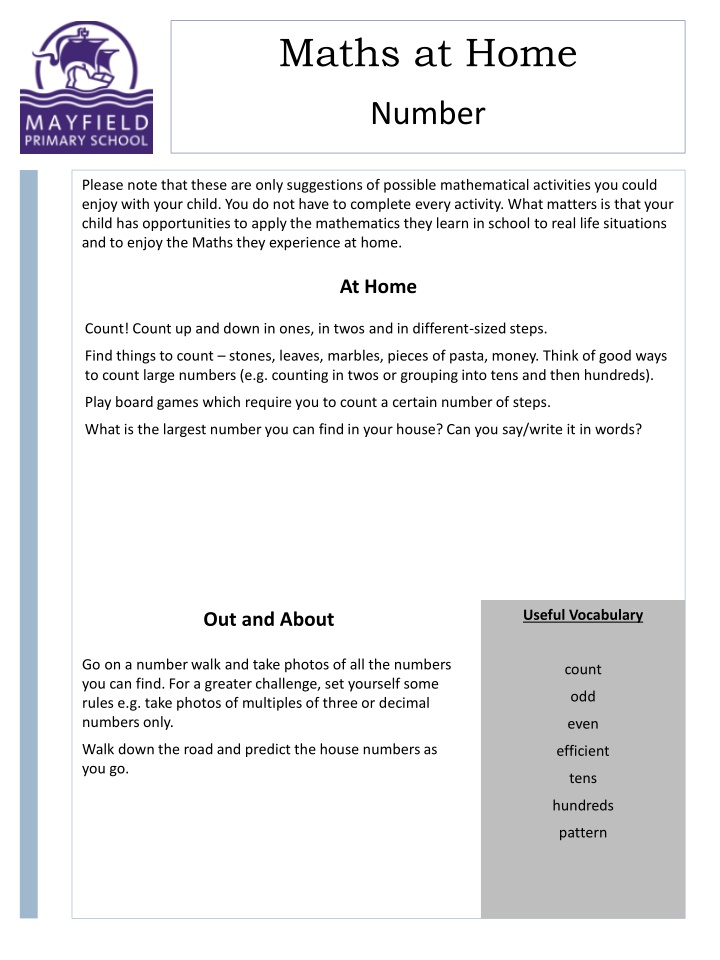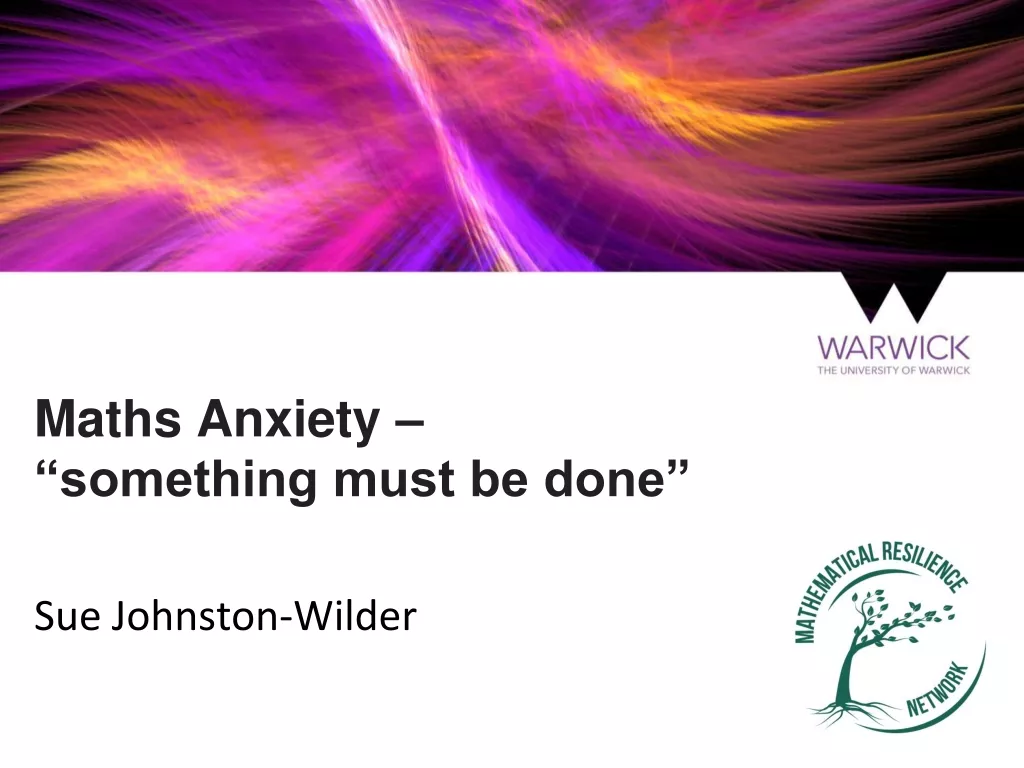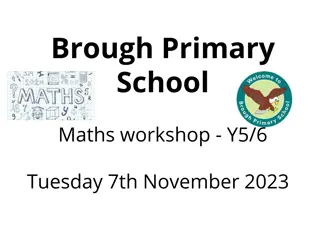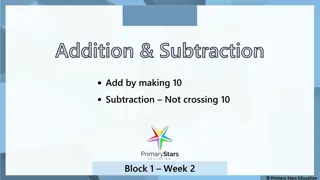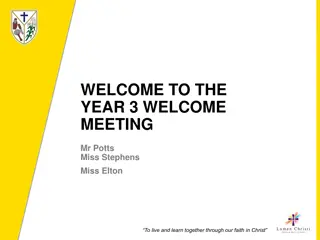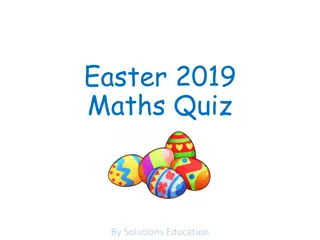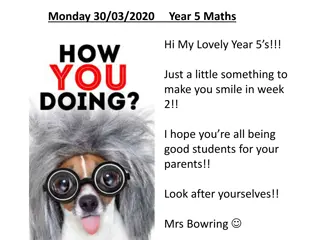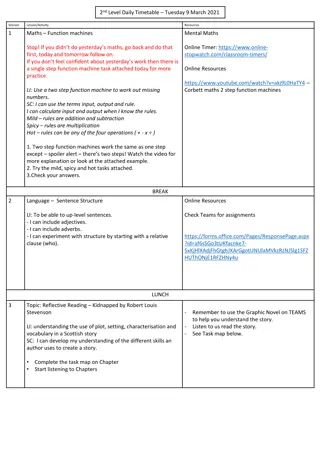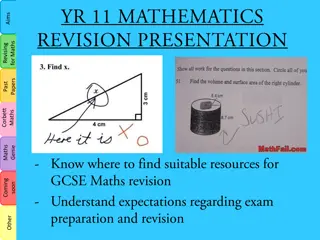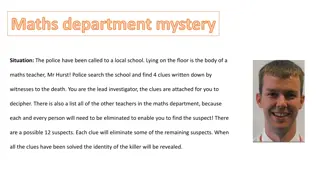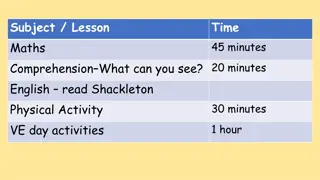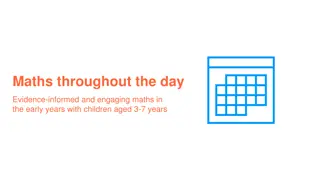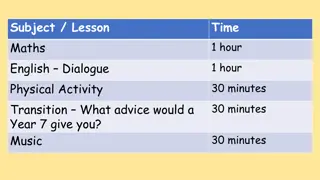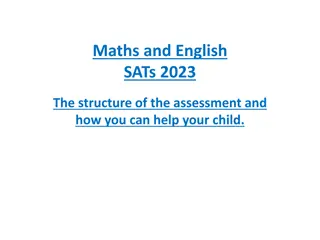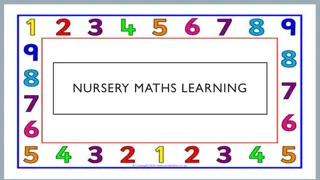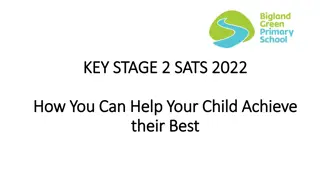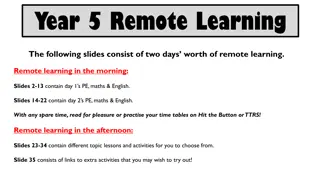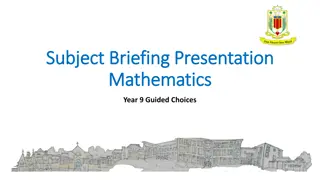Fun Maths Activities to Enjoy with Your Child at Home
Engage your child in enjoyable mathematical activities at home with these suggestions from Mayfield Primary School. From counting objects to exploring shapes and practicing multiplication, these activities aim to help your child apply their classroom learning in real-life situations. Foster a love for Maths and support your child's learning in a fun and interactive way!
Download Presentation

Please find below an Image/Link to download the presentation.
The content on the website is provided AS IS for your information and personal use only. It may not be sold, licensed, or shared on other websites without obtaining consent from the author.If you encounter any issues during the download, it is possible that the publisher has removed the file from their server.
You are allowed to download the files provided on this website for personal or commercial use, subject to the condition that they are used lawfully. All files are the property of their respective owners.
The content on the website is provided AS IS for your information and personal use only. It may not be sold, licensed, or shared on other websites without obtaining consent from the author.
E N D
Presentation Transcript
Mayfield Primary School Maths at Home Number Please note that these are only suggestions of possible mathematical activities you could enjoy with your child. You do not have to complete every activity. What matters is that your child has opportunities to apply the mathematics they learn in school to real life situations and to enjoy the Maths they experience at home. At Home Count! Count up and down in ones, in twos and in different-sized steps. Find things to count stones, leaves, marbles, pieces of pasta, money. Think of good ways to count large numbers (e.g. counting in twos or grouping into tens and then hundreds). Play board games which require you to count a certain number of steps. What is the largest number you can find in your house? Can you say/write it in words? Useful Vocabulary Out and About Go on a number walk and take photos of all the numbers you can find. For a greater challenge, set yourself some rules e.g. take photos of multiples of three or decimal numbers only. count odd even Walk down the road and predict the house numbers as you go. efficient tens hundreds pattern
Mayfield Primary School Maths at Home Multiplication Please note that these are only suggestions of possible mathematical activities you could enjoy with your child. You do not have to complete every activity. What matters is that your child has opportunities to apply the mathematics they learn in school to real life situations and to enjoy the Maths they experience at home. At Home How many shoes do you have in your house? If everyone has three potatoes on their plate, how many altogether? If you are baking a cake, how would you alter the quantities to make twice as much? Bake chocolate chip cookies with the same number of chocolate chip decorations on each one. How many chocolate chips on 12 cookies etc.? Can you find an array? Which pair of multiplication facts does it show? Useful Vocabulary Out and About How many cars can you see on the way to school? How many wheels? lots of, groups of multiply How many dogs can you see at the park? How many legs do they have altogether? times array Can you find an array? Which pair of multiplication facts does it show? At the petrol station, what is the price of 1 litre of petrol? How much would 10litres cost? Estimate how much it will cost to fill the tank.
Mayfield Primary School Maths at Home Shape Please note that these are only suggestions of possible mathematical activities you could enjoy with your child. You do not have to complete every activity. What matters is that your child has opportunities to apply the mathematics they learn in school to real life situations and to enjoy the Maths they experience at home. Cut out a selection of different shapes out of coloured paper. Use them to make a picture. Look at pictures by Escher. What can you see? Have a go at making your own picture in his style. Make a net for a 3-dimensional shape. Build shapes out of polydron or other construction toys. Find examples of 3-d shapes around the home (e.g. cylinders, spheres). One person chooses a shape and hides it. The other person can feel it but not see it. Can they work out what it is? Useful Vocabulary Go on a shape hunt. Take a camera and take photographs of all the shapes you can find. Here are some things you might want to look for: triangle, rectangle, square, quadrilateral, pentagon, hexagon, heptagon, octagon triangles, rectangles, quadrilaterals, pentagons etc. regular polygon regular polygons (all sides and angles equal) sphere, cube, prism, square- based pyramid, cyllinder irregular polygons spheres, cubes symmetry things with a line of symmetry parallel, perpendicular tessellating shapes right angle, acute, obtuse 2-d, 3-d, net
Mayfield Primary School Maths at Home Weighing and Measuring Please note that these are only suggestions of possible mathematical activities you could enjoy with your child. You do not have to complete every activity. What matters is that your child has opportunities to apply the mathematics they learn in school to real life situations and to enjoy the Maths they experience at home. Get baking! Follow a recipe and you will be practising your reading as well. Measure the heights of your family and order from tallest to shortest On a sunny day, measure the length of your shadow every hour. What do you notice? How much does an empty tin of baked beans weigh? How could you calculate this without eating the baked beans? If you then eat the baked beans, you could check how accurate your answer was. Can you find objects which weigh a certain amount? Have a competition and see who can get closest to 200g. Record the temperature every day for a week. Which day was the hottest? Which day was the coldest? (This is a particularly good activity for a really cold week.) Useful Vocabulary weigh measure estimate length temperature g, kg km, m, cm l, ml C
Mayfield Primary School Maths at Home Time Please note that these are only suggestions of possible mathematical activities you could enjoy with your child. You do not have to complete every activity. What matters is that your child has opportunities to apply the mathematics they learn in school to real life situations and to enjoy the Maths they experience at home. Tell the time. Wear a watch and look at it often. Encourage your child to use the family calendar. Using a calendar, work out how many days until a birthday or Christmas. Read stories about the months of the year. Can your child remember the months in the correct order? Read stories about the days of the week. Can your child remember the days in the correct order? Look at the TV guide. Calculate the length of different programmes. Useful Vocabulary Go to the bus stop. Use the bus timetable to work out the time of the next bus. How long will it take you to reach your destination? 24-hour clock 12-hour clock o clock, half past Plan a trip by train. Convert the times from 24 hour clock. quarter past, quarter to Take a camera on a walk through town. How many clocks can you find? What times do they say?
Mayfield Primary School Maths at Home Money Please note that these are only suggestions of possible mathematical activities you could enjoy with your child. You do not have to complete every activity. What matters is that your child has opportunities to apply the mathematics they learn in school to real life situations and to enjoy the Maths they experience at home. Count how much money is in your piggy bank. Look on the internet or in a shop s magazine or leaflet. Plan how you would spend a given amount of money. E.g. if you had 10 to spend on a meal, what would you buy? Plan what you will buy your family for Christmas/birthdays. How much would a present cost? Can you afford it? Will you get any change? How much does a card cost? Would it be cheaper to buy cards in bulk or to make your own? Useful Vocabulary Go to the shops. Estimate the cost of your shopping. How close can you get? pounds pence At the shops, look at special offers. Are they good value or not? total cost estimate
